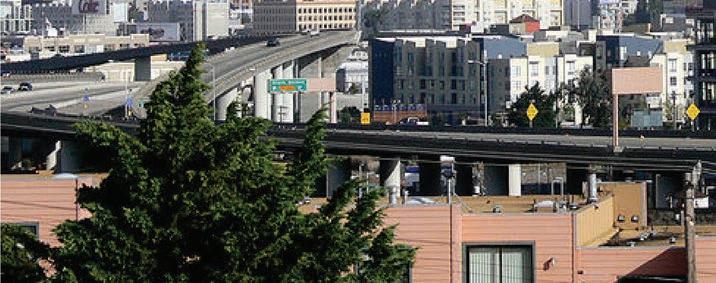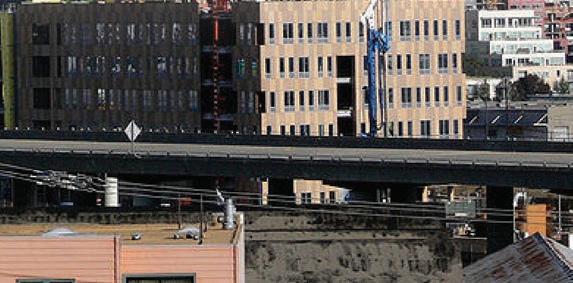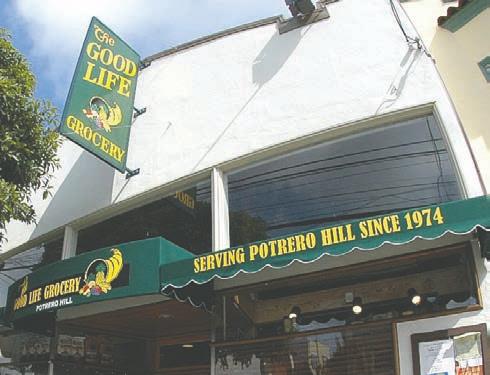




Structures, exhibiting a myriad of architectural styles, have been erected in Potrero Hill and Dogpatch for a least a 150 years. An ongoing building boom is expected to triple the neighborhoods’ population by 2025. The View compiled photographs of the existing built environment, spanning more than a centrury of design approaches, to provide a context for the communities’ past, and potential future.
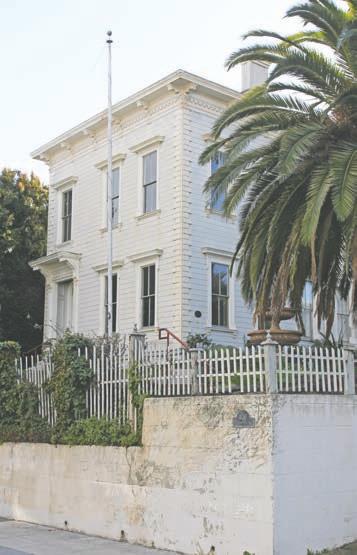
400

718-720
We live in a spectacular city. Many of the gifts we enjoy come naturally: topography that creates fantastic coastal views; mild weather; diverse geographies. Others are human made: dynamic, delicious, and abundant food, music, art, theater and cultural scenes. We’re sufficiently wealthy to support more than $10 billion in annual municipal expenditures without much trouble, an amount far more than the total budgets of dozens of nations. For many San Franciscans, those with resources, life is as good.
Yet there are nagging civic concerns and pernicious public problems. In an extraordinarily expensive city, more than one out of 10 residents are poor, dependent on socially-provided services to get by. Homeless rates remain stubbornly high. Families can’t afford to live here. Almost two out of 10 teenagers don’t graduate from high school, too many of whom are AfricanAmerican. Our streets are dirty; public transportation is meh. We continue to pave over paradise, flattening the underlying eco-system, obliterating waterways and habitats. We may have reached the limits of what recycling can do to address the plasticky-toxic particles flowing into our environment after we unwrap and discard our justin-time packages.
The City and County, particularly the Department of Public Works, Municipal Transportation Agency, and San Francisco Public Utilities Commission, wastes a great deal of our money, some, no doubt, as a result of
corruption. In the meantime, our state government is engaged in active civil disobedience with the Feds, on such issues as drug and immigration policies; and climate change poses challenges to our fossil fuel-soaked economy and ability to keep land dry.
In this context, San Franciscans must select a new mayor from a field as personally diverse as any presented to any electorate anywhere. There’s an African-American woman who pulled herself out of poverty; a Gay-Jewish man who almost became a rabbi; an Italian-American daughter of a former mayor, who presents herself as antiestablishment; a Korean-American woman; and several others. Among those others, the outsider is the White, Republican, male candidate, who has no chance of winning. It’s worth pausing to appreciate the moment, in which the value of race, sexual preference, and pedigree has been vastly diminished, or even turned upside down.
Identity politics is important to San Franciscans; so too is the entertainment value candidates bring to the office. Like a favorite sporting team, all else equal African-Americans are proud to vote for African-Americans, Asian-Americans for Asian-Americans, and so on and so forth. Even more important to San Franciscans, though, is a contender’s charisma. Willie Brown is Black, Gavin Newsom White, racial distinctions that aren’t as compelling as the fact that they’re both fun to watch.
Mark Leno isn’t the most char-
MARK LENO continues on page 14
Three years ago, the View reported on the health risks nail products pose to salon workers in the United States, in “Nail Salon Industry Slow to Clip Health Hazards,” July, 2015. Since then, hundreds of salons throughout California have improved their health and safety standards.
Known as the “toxic trio,” three chemicals commonly found in nail polish – toluene, formaldehyde, and dibutyl phthalate – can induce such side effects as nausea, difficulty breathing, liver and kidney damage, and birth defects. What’s more, upwards of 90 percent of the 10,000 chemicals used in nail polishes haven’t been tested for possible hazardous effects on humans,
according to the California Healthy Nail Salon Collaborative, one of 13 California organizations to receive the Governor’s Environmental and Economic Leadership Award earlier this year
Chemicals found in nail products can can cause severe health problems for salon workers, who are constantly exposed to nail products. Formaldehyde, for example, is a known carcinogenic; longterm exposure to it can be hazardous.
Since 2005, the Nail Salon Collaborative, launched by Oakland-based Asian Health Services, has worked with municipalities to establish healthy nail salon recognition programs. Counties and cities have officially designated almost 200 salons in California as
“healthy;” they don’t use nail polish containing the toxic trio, ensure proper ventilation, and mandate that their staff wear protective gloves and masks.
“There’s been quite a bit of progress,” said Julia Liou, chief deputy at Asian Health Services, and California Healthy Nail Salon Collaborative director. Liou encouraged consumers to advance the crusade by only patronizing salons that adhere to healthy practices and prioritize worker health. “It’s an important movement, because worker health issues have become an epidemic; not just in California, but all across the nation,” Liou said.
There are 48 healthy nail salons in San Francisco, according to Jen Jackson, Toxics Reduction and Healthy Ecosystems programs manager at the
San Francisco Department of the Environment, at least one in almost every neighborhood. In 2015, there were only 16 recognized healthy nail salons in the City.
“Three years ago, we set a goal for ourselves to try to get 20 percent of the market in San Francisco to become healthy nail salons. There are about 250 salons in the City, so 50 would be 20 percent, so we are almost at our number,” Jackson said. “We are really proud of what we’ve accomplished over the last few years.”
District 10, which includes Potrero Hill, has the lowest number of healthy salons. District 5, with Haight-Ashbury, the Panhandle and the Western
NAIL SALON continues on page 14

Editor,
BY STEVEN J. MOSSA couple of years ago my wife, Debbie, and I joined a tour of Lower Haight homes built more than a century ago. Mostly Victorians, their facades were exquisite in ways San Franciscans sometimes forget to appreciate: carefully crafted moldings, vibrant color contrasts, one-of-a-kind windows. Their painted faces create a festive public sphere, like a bright smile from a stranger passing by.
“One hundred years from now, do you think people will tour the houses that’re being built today,” I asked Debbie.
“I doubt it,” she said.
Architectural beauty is in the eyes of the beholder. Some find Victorians, Edwardians, Queen Annes, and their ilk fatuous and overly precious. Others might prefer Early Suburban Tracts – ubiquitous in the Marina, Sunset, and even Potrero Hill – which were the subject of glowing San Francisco Chronicle articles that appeared alongside ads from developers when they were first constructed during the 1930s and 1940s.
Still, the weight of public opinion is on the side of homes built from the 1880s through the first decade of the 20th Century. Tens of thousands of tourists visit the “Six Sister” Victorians across the street from Alamo Square each year; at best travelers

might glance as they drive by the Tract homes in Daly City alongside Interstate-280, and be inspired to break into the “Little Boxes” song from the early-1960s.
Today’s architecture is dictated by New Modernism, what Debbie calls “squares within squares, in which style is expressed by painting one square a different color than another.” In its best renditions, it can be chic and edgy, like structures that might be delivered by massive drones from Amazon’s experimental laboratories; or even a kind of riff on stone-age cliff dwellings. There are a number of attractive New Modernist buildings in Dogpatch, possibly as the result of community design efforts led by the Dogpatch Neighborhood Association.
In its worst, more common, iteration, New Modernism looks cheap and prematurely tired. When herded together, like in Mission Bay or The Shipyard, New Modernism creates neighborhoods that feel as if they could be anywhere, completely divorced from what San Francisco was, or probably wants, to be. Yet the style feeds off the City’s past; large chunks of its value is created by New Modernism’s proximity to its betters, like a parasite attached to a magnificent Blue Whale, slowly eating away at its host until it threatens to become the dominant creature.
San Franciscans constantly debate the proper height, density, and affordability of new developments. These elements benefit from being easily mathematically expressed; is a 45-feet tall structure allowed, or 60-feet? Arguments over design are mushier, burdened with less certain language. “I don’t like that” isn’t sufficient, nor, necessarily, are calls to stylistically adhere to a neighborhood’s architectural context. Difference isn’t so much the problem as insipidness. But whose to judge?
Judge we must. Our physical sur-
PUBLISHER'S VIEW continues on page 14


OVER THE LAST THREE MONTHS the View has been subjected to a series of web attacks that have intermittently disabled our website and email. We've been working to solve the problem, and hope to be fully Internet functional this month. Regrets to those who have been trying to access us or our website.
Apropos of “View Hopes to Make it to 50, and Beyond,” in the March issue, 48 years ago two women, Babette Drefky and Emma Fleming, were instrumental in writing articles for the neighborhood paper, Hills and Dales. They asked me to join them. We made sure the articles fit on one side of one sheet of paper; the other side was left for names and addresses. I’d take the finished sheet of paper to the Potrero Hill Neighborhood House to be mimeographed on a hand-cranked machine. Then, back to Fleming’s Kansas Street home to fold, paste on labels dipped slightly in water, and sort. I drove to the Second and Mission Street U.S. Post Office to mail the bundles because it was less expensive to use bulk mailing.
In a personal note, my gratitude to the editor and staff of The Potrero View, an award-winning paper! Enclosed is my donation of $100.
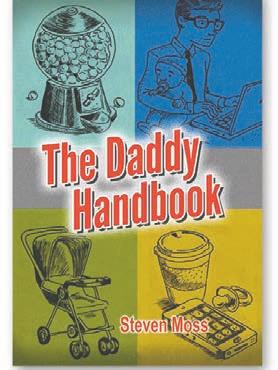
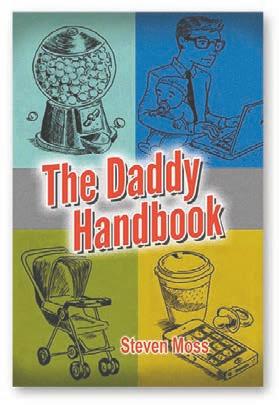


Friends of Jackson Park appreciates the View’s coverage of efforts to improve our neighborhood park. Our design continues to evolve as we work hard to incorporate the many needs and wishes of our diverse community. As we get closer to a final redesign, we’d like to clarify and correct points made in the April article, “Proposal Progresses for Significant Jackson Playground Facelift.”
The illustration of the proposed design published in the article shouldn’t have been used, as some elements, such as the batting cages, have been eliminated. Fencing will be removed, allowing open access to the park from Carolina and Mariposa streets, but the ballfields will remain fenced. To maximize available space, we’re planning for a single rooftop tennis court, rather than several courts as suggested in the article.
Without question the area surrounding the park is exploding with new development. According to San Francisco Planning Department figures, 2,076 additional housing units are slated for the surrounding neighborhood, a number understated in the article.
Additional funding of $1,640,000 was allocated by the Eastern Neighborhoods Citizens Committee, not the San Francisco Recreation and Parks Department, from developer impact fees. Developers Related California, 1601 Mariposa, and Ronaldo Cianciarulo, 1301 16th Street, have already made good on their pledges.
We’re working hard to ensure that Jackson Park is prioritized in the next Parks Bond, which will appear on the 2019 ballot. We ask community members to support our efforts by contacting the San Francisco Board of Supervisors and mayoral candidates to advocate for inclusion of Jackson Park renovations in the bond.
We’re getting close to a final redesign draft. We’d hoped to have a community meeting in May, as reported, but this will likely be rescheduled to September. We thank everyone who has provided feedback and helped support our efforts thus far.
A controversial State Senate bill, which called for circumventing local land use controls as a means to accelerate housing development, failed to make it through the State Transportation and Housing Committee last month. The legislation is dead this year. Its author, Senator Scott Wiener (D), indicated he’ll introduce a revised proposal in 2019.
Senate Bill (SB) 827 would’ve allowed developers, regardless of local zoning laws, to construct 55-foot buildings, essentially five stories, if a parcel is within one-half mile of a ferry terminal or rail station, including Muni stops. Forty-five-foot buildings would’ve been allowed within onequarter mile of most bus stops. The bill would’ve overridden local height and density limits in 96 percent of San Francisco, although some City locations already allow buildings up to 45 feet.
“California has a housing deficit approaching four million homes,” Wiener explained before the bill went to committee. “Our housing shortage is a huge threat to our state’s diversity, economy, environment, and quality of life.”
The bill split environmentalists, housing activists and City leaders.
Committee members who voted against it questioned whether it’d provide sufficient affordable housing, and whether it was a good fit for smaller towns. Wiener and co-author, Senator Nancy Skinner (D), who both sit on the committee, were only able to muster two additional votes; the proposal failed, six to four, with three abstentions.
California YIMBY, a lobbyist group largely backed by big technology firms concerned about recruiting and retaining talent, was the bill’s sponsor. The organization believes that by vastly increasing housing supply, rents will decline and housing prices drop. By building next to transit, automobile emissions could be cut as well. The legislation was supported by the San Francisco Housing Action Coalition, whose membership includes builders, architects, engineers and construction unions.
Bill proponents frequently cited a 2016 McKinsey Global Institute study that found California ranked 49th among states in number of housing units per capita. According to the report, from 2009 to 2014 the state added 544,000 households while only 467,000 new units were built.
In an early draft, SB827 raised SB 827 continues on page 14
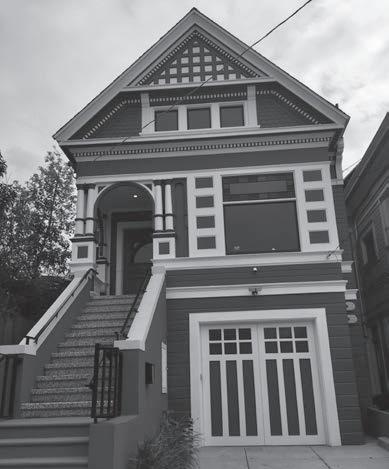
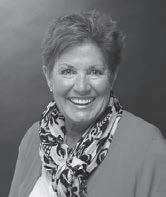


District 5 Supervisor, London Breed, is hoping to complete a narrative in which she rises from a childhood in public housing to Room 200 of City Hall as San Francisco’s next mayor.
The 43-year old Breed is one of eight candidates vying to win the June 5 mayoral election. At an editorial board meeting held by the View last month, she answered a variety of questions about the City’s future, frequently depicting herself as a consensus builder and politician who isn’t afraid to discuss unpopular solutions, such as her sponsorship of a safe injection site task force last year. “I won’t do this job in fear of losing it,” she promised.
Breed was raised by her grandmother in the Western Addition in the since-rebuilt Plaza East housing project, once nicknamed “Outta Control” for its rougher element. She remembers people, friends or cabdrivers, wouldn’t come to her home because of the neighborhood’s stigma. “One of the things I won’t do as mayor is treat people any differently because they work for a certain industry or because they are poor or wealthy or what have you,” she said. “When you are a mayor of a city like San Francisco what’s most important is that you represent everyone.”
Breed graduated from Galileo High School and obtained a bachelor’s degree in political science and public service from the University of California, Davis and a master’s degree in public administration from the University of San Francisco. In 2002, then Mayor Willie Brown appointed her executive director of the African American Art and Cultural Complex, a position she held until successfully running for the Board of Supervisors as the District 5 representative in 2013. In 2015, she
became Board president. When former Mayor Ed Lee died in December, she served as acting mayor for 22 days.
She’d like to preserve San Francisco’s ethnic diversity and community culture. She touts writing legislation requiring 40 percent of new affordable housing units to be set aside for neighborhood residents as one of her biggest supervisorial successes. When that law hit a snag with the Willie B. Kennedy Apartments, a senior housing development on Turk Street, she flew to Washington D.C. to negotiate a deal with the U.S. Department of Housing and Urban Development (HUD). The project used federal money; HUD rules forbid reserving units for local residents. She negotiated an antidisplacement clause in the rule, which applies to areas where gentrification is occurring based on U.S. Census data. New affordable housing units in the Western Addition, Bayview-Hunters Point, the Mission and Chinatown now qualify for the 40 percent inclusion even if accepting federal funds.
Breed supports sturdier preferences for allowing students to attend schools within their neighborhood. “I feel strongly that kids should be able to go to the school within close proximity of where they live,” she said. “Now we have parents zig-zagging kids all across the City,” something that affects pupils’ study time and parents’ ability to coordinate.
Breed said greater amounts of housing of all types needs to be built to keep families in San Francisco. As supervisor, she led efforts to expand the affordable inclusionary rules to accommodate more middle-income housing. “I think we have been operating under 1960s housing laws and we say, ‘No,
LONDON BREED continues on page 12


With San Francisco’s special mayoral election to be held June 5, candidates have been running campaigns that focus on differences that set them apart from their rivals. Angela Alioto, a civil rights attorney, former member and president of the Board of Supervisors, distinguishes her candidacy by highlighting her deep City roots.
“People know my words are more than just words,” she said. “They know I will get things done and that I want the City to thrive. My experience as a legislator for eight years, and my understanding of San Francisco as a city, makes me more qualified than my opponents.”
Alioto, who’s the daughter of former mayor Joseph Alioto, was born and raised in San Francisco, and has fond memories of the City dating from her 1950s childhood. Her decision to run for mayor largely stems from a desire to preserve San Francisco’s iconic nature and majesty; qualities threatened, she believes, by congested streets, sidewalks filled with debris, and homelessness. Alioto points to her previous legislative successes while supervisor, such as authoring the Sanctuary City law, helping pass the first medicinal marijuana ordinance, and creating the San Francisco Film and Youth commissions.
Tackling homelessness is a central feature of Alioto’s campaign. In 2004, then Mayor Gavin Newsom’s appointed
then Supervisor Alioto to lead a council that hoped to eliminate homelessness within a decade. The goal was to get chronically homeless individuals off the streets and out of tents and shelters and into stable housing. According to Alioto, the effort transitioned more than 4,850 individuals into permanent, supportive housing with a better than 90 percent retention rate between 2004 and 2009. However, Alioto said a change in City Hall leadership in 2012 derailed the plan.
“It absolutely worked,” Alioto said. “I’m in the race because of the problem with tents and homelessness and I’m the only one who can make a difference in that area. I’ll bring the 10-year plan back because it was working. I’ll bring it back, and there will be a visible change within months.”
Alioto promises to shift the emphasis from temporary housing and shelters to building permanent housing for the homeless. Her plan involves streamlining pathways to housing and mental health services, providing long-term employment opportunities and ensuring funds devoted to the issue are spent effectively.
Alioto doesn’t think legislation introduced by State Senators Scott Wiener and Henry Stern to expand conservatorships to the chronically homeless, those with mental illness and substance use disorders, will make a significant dent in the recurrently

SAN FRANCISCO PROPOSITIONS
A – YES Public Utilities Bond.
Authorizes revenue bonds for clean (no fossil fuels or nuclear) power facilities, like voters did in 2002 for water & sewer facilities.
B – YES Commissioners not
Running for Office
Reduces opportunity for corruption when campaign donations go to a commissioner whose vote could be influenced.
C – YES Commercial rent tax for Childcare & Early Education.
Eases burdens on lower income families trying to stay in the City.
D – No position* Tax for Housing & Services
gift to Republicans in a backroom deal to extend Gov Brown’s cap-andtrade system, the 2/3-vote to begin spending would undermine clean energy progress.
71 – YES Effective Date of Ballot
Measures.
Ensures that all votes are counted before a measure can become law.
72 – YES Rainwater Systems Tax Exclusion
Stops penalizing property owners for conserving water via rainwater capture.
Regional Measure 3 – YES Bay
Area Toll.
Raises bridge tolls to pay for more public transit (although, alas, some goes to highways).
Goes after the same funding source as Prop C and would kill C if D passed with more votes.
E – No position* Banning Flavored Tobacco
Bans all flavored tobacco.
F – YES Representation for
Evictions
Helps correct the power imbalance between landlords and tenants.
G – YES Parcel Tax for SFUSD.
We support better teacher pay.
H – NO SFPD Use of Tasers.
This proposition undermines the Police Commission and its ability to set Taser policy.
I – No position* Relocation of Sports Teams.
Decide for yourself.

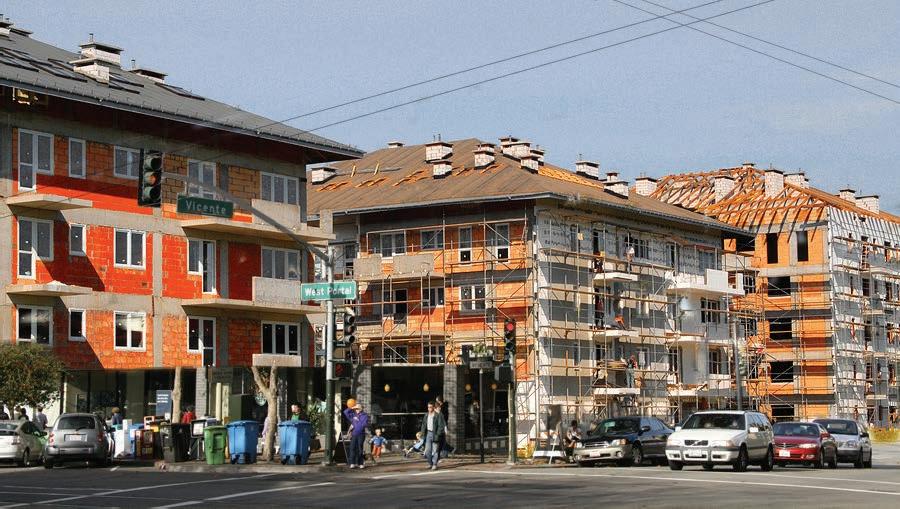

Neighborhoods are worth fighting for. San Francisco’s charm — what makes it the city where everyone wants to live — comes from our neighborhood control of planning decisions. As mayor I will not allow the state to seize control of planning. While SB 827 may be temporarily on hold, the struggle to save our great neighborhoods has just begun.
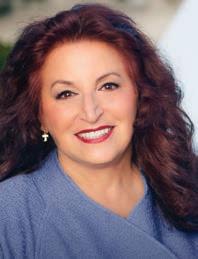
Developers around the state are salivating. They’re making all kinds of backroom deals to abolish every residential restriction in neighborhoods, through Senate Bill 827. It’s too radical an attack on our a ordability crisis. “A ordable Housing” can be a mantra that stands to make the developers very rich — if they are allowed to build in our beautiful neighborhoods.
While I strongly support building a ordable housing, and I promise to build 5000 low and moderate-income housing units every year as mayor, we have not seen that building more housing brings down housing costs. Rents and homeownership are still out of reach. Mayor Ed Lee’s 2014 plan to build 30,000 units by 2020 — four years later —is now halfway complete, so why is the cost of housing rising?
As George Wooding (who is supporting Jane Kim for Mayor) reported in the Westside Observer, “Since announcing his Housing Plan in January 2014, over 17,100 units have been built or completely rehabilitated, with … 6,166 new affordable housing units, plus 1,838 acquisitions and rehabilitation of existing a ordable units in the fth report issued in May, totaled an increase of 8,004 affordable units citywide, but that was o set by the loss of 4,182 a ordable units due to a variety of factors (including various types of evictions, Ellis Act conversions, and other reasons). That left a new gain of 3,822 a ordable units.”
Since the state seized control, through Costa-Hawkins, of our rentable housing — housing that allows our most vulnerable San Franciscans to live in their homes — now it is instrumental in the spiraling rent and eviction crisis . Developers are waiting with ready cash to bankroll the campaigns of the good Senators from Coachella, Orange County and Fresno. With all due respect, I don’t see the value of relinquishing control of our precious and limited spaces to their purview. Protect our neighborhoods! Angela’s experience, drive, and passion to improve the lives of all San Franciscans is unmatched in this race. She will rise above the petty, divisive politics in City Hall and find solutions to the issues that affect all of us.
Whether related to demands for affordable housing, better aesthetics, or wider sidewalks, citizen input is an integral part of San Francisco’s building process. While participation slows the pace of development, civic advocates insist that community-molded modifications improves projects.
The argument over whether community input is critical to a better built environment or a blunt expression of nimbyism intensified as a result of introduction of Senate Bill 827, which would’ve superseded local zoning laws as a means to streamline housing development. The bill failed in committee. Last month, Mayor Mark Farrell introduced legislation to standardize noticing requirements for planning decisions. The bill would eliminate the need for multiple hearings, establish a process to approve minor building alterations without a hearing, and allow affordable housing projects to proceed without Planning Commission approval.
The San Francisco Planning Department’s current permitting process encourages public engagement in proposed construction activities as early as
possible. In cases involving a change in use or something as small as a deck or addition, the Department may require a “pre-application meeting” prior to the sponsor even filing for a permit. The point of this public forum is to identify key concerns and eliminate delays that may result later if those worries aren’t addressed.
The Potrero Boosters and Dogpatch Neighborhood Association (DNA) have issued design guidelines to make developers aware of potential areas of contention well ahead of the permitting process. “We try to get better guidance to developers as to what would fit the community as a whole,” said DNA president Bruce Huie.
The two organizations have designated teams to meet with developers. According to Boosters president and District 10 Supervisor candidate, J.R. Eppler, such engagement helps expedite the process. “I think the neighborhood gets frustrated with the delays as well,” he said.
Eppler said that when it became apparent that land around the decommissioned Potrero Power Plant was to be redeveloped, “The Planning De -











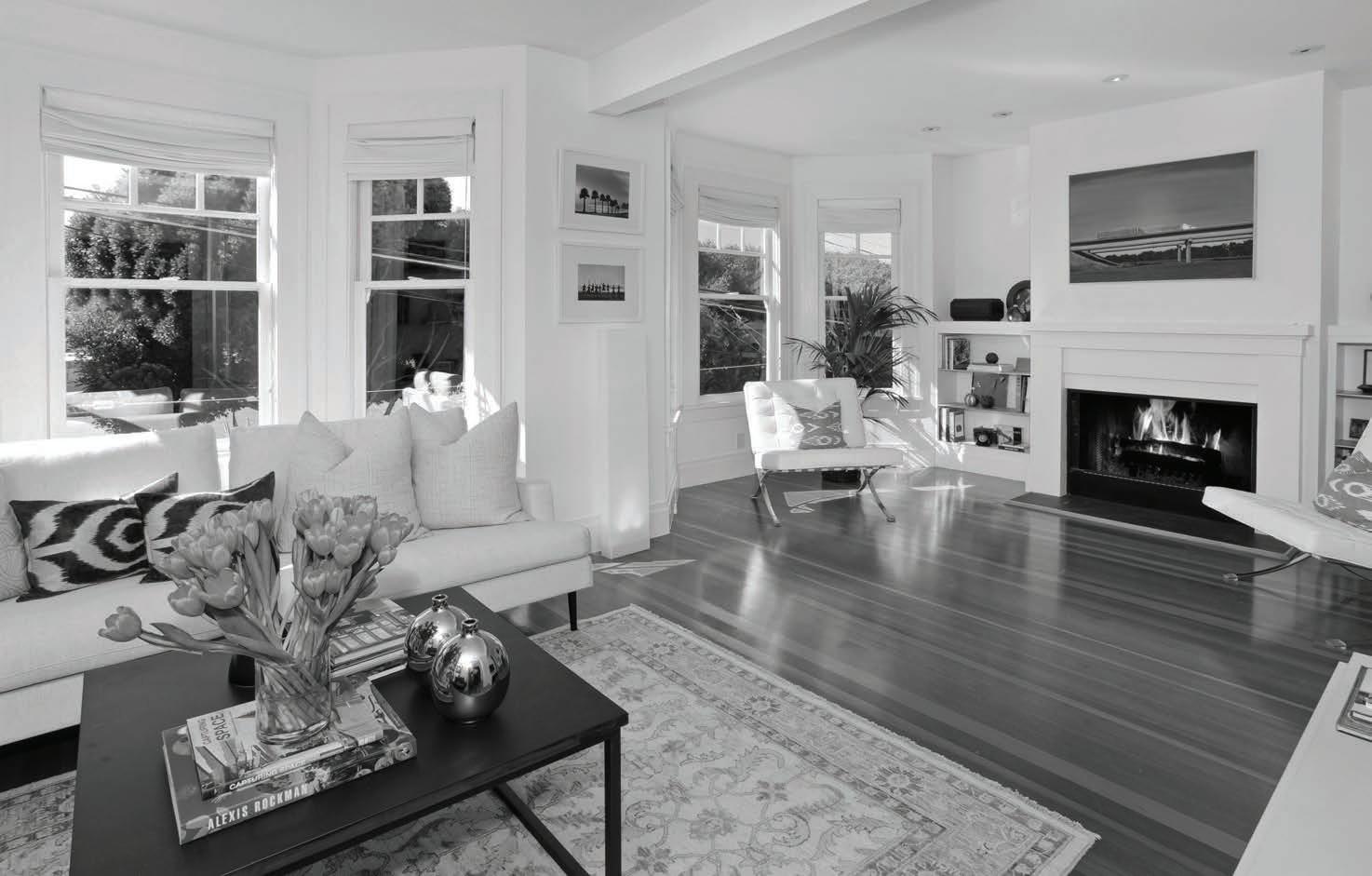
Getting a home ready for sale doesn’t have to be difficult or expensive. There are several simple ways you can add value inexpensively:
MAKE IT SHINE—There is nothing more important than ensuring your home is clean.
LIGHTEN AND BRIGHTEN—If it is time to repaint, consider lighter colors that will make your home brighter and feel more spacious.
OUT WITH THE OLD—It is easy to accumulate clutter even after just a few years. Donating or discarding unneeded items can make a home feel more spacious—and make your future move easier.
DON’T FORGET SMALL THINGS WITH BIG IMPACTS—Simple steps like painting the garage floor or planting bright flowers near your home’s entrance are easy and inexpensive ways to make a home more welcoming and tidy.

If you’d like a free report on the value of your home, call Tim Johnson at 415-710-9000.
Tim Johnson
415.710.9000
tim@timjohnsonSF.com
www.timjohnsonSF.com
Lic. #01476421
In his recent “State of the City” speech, Los Angeles mayor, Eric Garrett, stated that “homelessness isn’t an issue, homelessness is the issue.” Candidates to become San Francisco’s next mayor appear to agree. Frontrunners London Breed and Mark Leno have each offered comprehensive plans to end homelessness. Jane Kim has identified a framework with which to tackle the problem. Angela Alioto previously led a municipal commission on homelessness and has stated that “homelessness is the biggest concern in this upcoming mayoral election, and
it should be.”
Leno issued a comprehensive set of steps that he claims will end street homelessness by 2020. It’s an ambitious goal, given that Mayor Ed Lee hardly made a dent in his effort to take an additional 1,000 human beings off the street last winter before he died. The centerpiece of Leno’s plan is immediate utilization of 1,000 single-room occupancy units he maintains are unnecessarily vacant presently. The candidate also plans to build 400 additional supportive housing units, and significantly expand capacity at shelters, Navigation
HOMELESS continues on page 17
Need some inspiration for your latest project at work or at home? Find your muse in our revamped magazine selection and the fascinating neighbors you’ll meet here every day!
Last month, District 10 residents cast votes to decide how to spend $250,000 to improve their neighborhoods. Proposals were compiled by residents at three brainstorming sessions held in 2017 and submitted online as part of a Participatory Budgeting initiative.
Participatory Budgeting is a democratic process in which locals identify and vote on community projects for funding. It first emerged in 1989 in the Brazilian City of Porto Alegre. The process quickly spread throughout that country, and has been adopted by several United States cities, including New York, Boston, San Francisco and Oakland.
The concept was first introduced to the City as a District 3 pilot program in 2012 by then Supervisor David Chiu, with $100,000 in funding. The following year, District 7 expanded the process
online to increase participation. This month’s Participatory Budgeting is limited to Districts 7, 8 and 10.
“I want to introduce participatry budgeting in San Francisco because a deeper level of civic participation will improve our community investments in our neighborhoods,” Chiu said.
District 10 Supervisor and California Board of Equalization candidate, Malia Cohen, invited residents to three informational meetings last year to discuss ways to invest a quartermillion-dollars within the categories of neighborhood community services, transportation and pedestrian safety, beautification and open space, education and youth, and culture and arts. Fall gatherings were held at the Potrero Branch Library and Bayview YMCA; a winter assembly took place at the Visitacion Valley Branch Library. According to a District 10 Supervi-
BUDGET continues on page 17


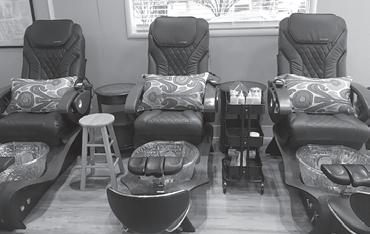
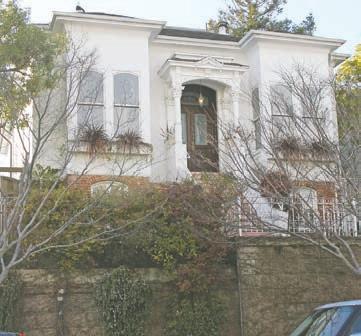
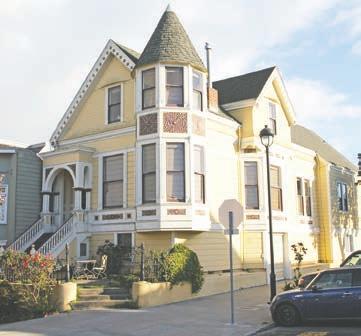
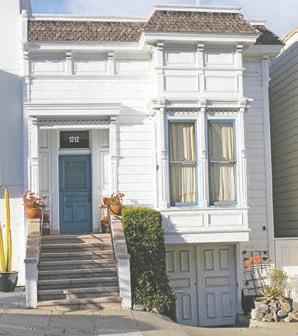
1212 19th

520 Connecticut

472-474 Connecticut Street (1900): An elaborately detailed Queen Anne-influenced gable front design with a projected bay supported by brackets, and a decorative front gable support.

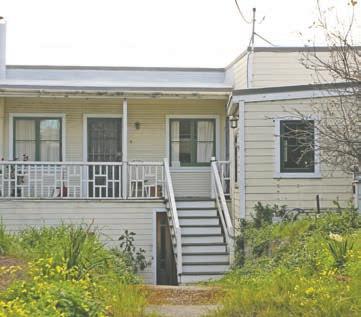
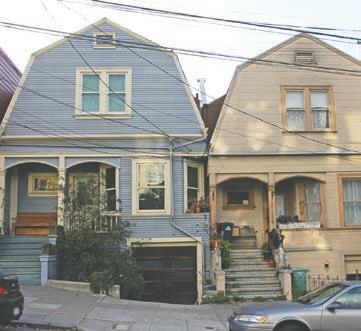
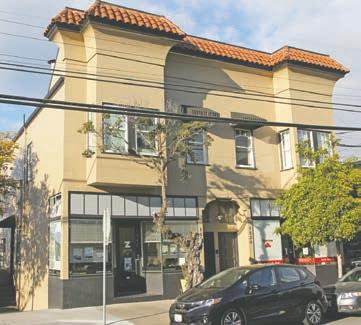
1538 20th
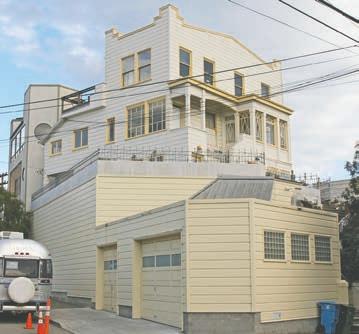
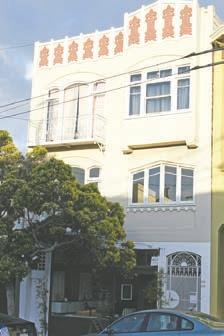


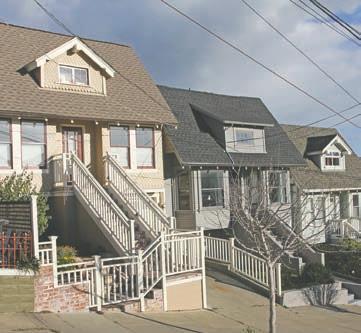

American Can Company, now American Industrial Center, 610 22nd Street (1916): Early 20th century brick and contrasting cast concrete frame building with steel windows and a strong bracketed cornice.
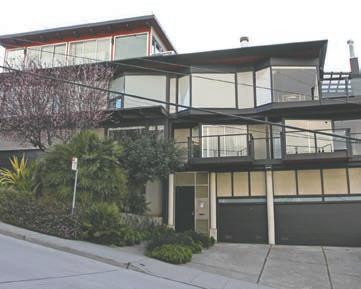
730 De Haro Street
A Modern, mostly
Bay Area.
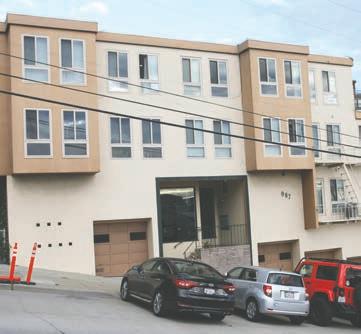
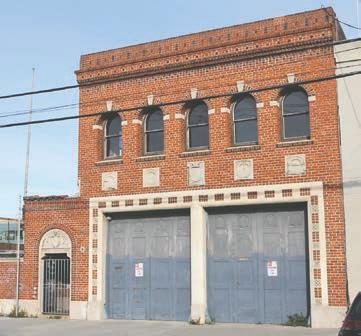
Firehouse, Engine Co. Number 16, 909 Tennessee Street (1925): A Palladian Style brick building with five arched windows and five cast stone panels above original engine house doors. Note decorative patterns in multicolored brick and Art Deco influence in the tiled cast stone door surround.
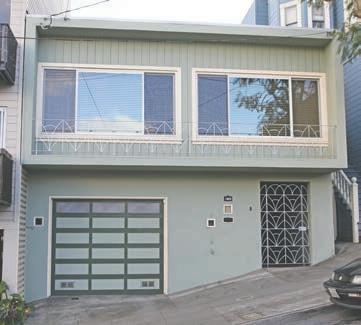
1929 20th Street (1954): Modern Mid-Century, with a projecting cube-like second story and metalwork in contrasting Art Deco style. Quite likely to have been architect designed.
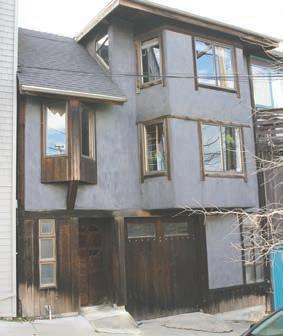
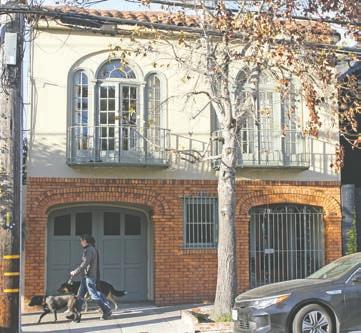
1632 20th Street (1927): One of many Mediterranean Style homes on the Hill; this one features Palladian windows, suppressed arches, decorative ironwork, brick-clad first story, and a tiled mansard roof.
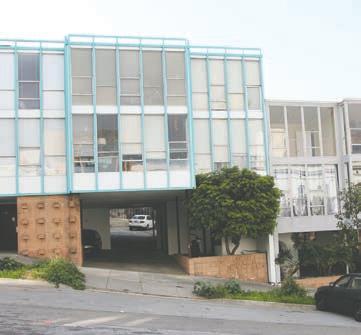
324-328 Pennsylvania Avenue (1960): Modern Mid-Century apartment complex raised above street level with an almost all glass facade that recalls the “curtain-wall” commercial projects of the period. The accessible parking is fully open to the street. Likely to have been architect designed.
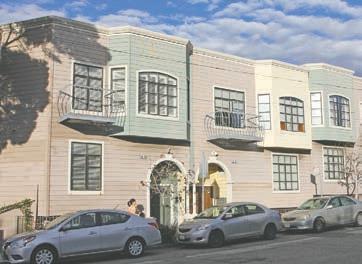
2-16 Southern Heights Boulevard
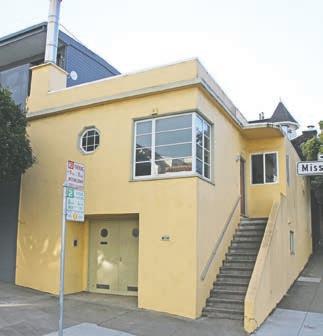
400 Mississippi Street (1938): A 1930’s Art Moderne or Modernistic asymmetrical stucco design with corner wrap-around, hexagonal, and porthole windows.
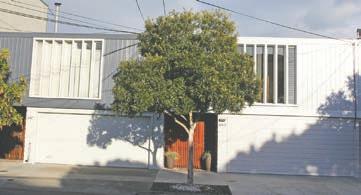
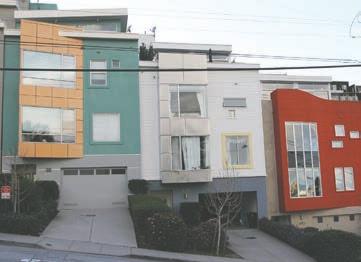
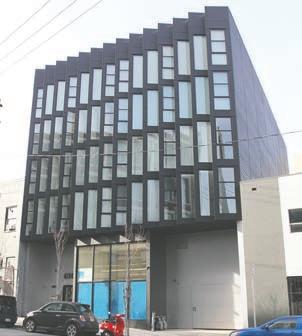

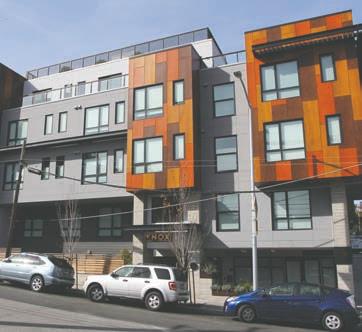

Now through 5/12
Art: Artwork for Bedrooms
Artwork for Bedrooms tells the story of eight artists who lived in San Francisco from 2000 to 2008, a period that, until now, has been framed by the Mission School, artists known for sprawling assemblages inspired by graffiti culture. Artwork for Bedrooms draws a parallel narrative from the same moment of young artists who were similarly invested in “poor” materials, but who put them to work in more abstract, fragile, or conceptual ways. Artwork for Bedrooms is curated by the California College of the Art’s Graduate Program in Curatorial Practice Class of 2018: Maddie Klett, Zhaoyu Lin, MK Meador, Cristiane Ulson Quercia, Rosa Tyhurst, and Qinyue Xu. Free. CCA Wattis Institute, 360 Kansas Street. For more information: https://bit. ly/2qG06kx or 415.355.9670.
Youth: Potrero Hill Neighborhood House Summer Youth Program
Registration for "Summer in the City" is currently open. Starting June 18th for children ages 6 to 13. For more information: Al Johnson 415.826.8080
3 thur
Dance: Introduction to Argentine Tango
Christy will introduce you to the world of Argentine Tango, including the dance, music, and culture. Learn a few basic Tango steps, enjoy Argentine wine, and meet like-minded people. Christy’s Tango Loft, 701 Minnesota Street. 6 to 7:15 p.m. Free. Part of Bay Area Dance Week. For more information and to register (required): https://bit.ly/2Hx74lG
Music: Kevin Patrick McGee
Live music by singer-songwriter Kevin Patrick McGee, whose poetic, and occasionally amusing, original tunes spans alt-country, bluegrass, folk, and

rock. 7:30 to 9 p.m. Farley’s, 1315 18th Street.
Benefit: Taste of Potrero: Daniel Webster Elementary School
Fifty of San Francisco’s hottest restaurants and bars gather for one night, offering unlimited bites and sips. In its eighth year, Taste of Potrero has become San Francisco’s premier culinary celebration. This year's contributing purveyors include, Son’s Addition, Nopa, Trick Dog, 4505 Burgers & BBQ, Leo’s Oyster Bar, Piccino, Almanac Taproom, and many more. One hundred percent of the proceeds benefit Daniel Webster Elementary School, located in Potrero Hill. $150 to $750. 6 to 10 p.m. The Midway, 900 Marin Street. For more information and to purchase tickets: https://bit.ly/2HIxr5P
4 fri
Benefit: Paula West:
San Francisco Senior Center
An evening with renown singer, Paula West, fabulous food, drinks, entertainment, raffle and live auction. Proceeds go to San Francisco Senior Center (SFSC), the nation’s oldest nonprofit senior facility. SFSC provides older San Franciscans — 2,000 individuals annually — culturally and linguistically appropriate opportunities for life-long learning, healthy living, and social and community activities that foster independence and self-reliance to age in place. $125 to $375. 6 to 9:30 p.m. San Francisco War Memorial & Performing Arts Center, 401 Van Ness Avenue. For more information and to purchase tickets: https://bit.ly/2HazluE
5 sat
Cinco de Mayo: Festival
Enjoy Cinco de Mayo in the Mission with an annual all-day family-friendly celebration and block party with live music, cultural performances, and more. Two stages, kids zone, food and exhibitor booths, beer garden, fun for all ages. Free. 10 a.m. to 6 p.m. Valencia Street, between 21st and 24th streets.

For more information: https://bit. ly/2417h6j
9 wed
Music: Daniel Berkman
Potrero Hill resident Daniel Berkman is a composer, multi-instrumentalist and innovator of the kora, a 21-stringed harp/lute from West Africa. 7:30 to 9 p.m. Farley’s, 1315 18th Street.
10 thur
Music: James Everett Rhythm and blues, jazz, and pop singer. 7:30 to 9 p.m. Farley’s, 1315 18th Street.
5/10 to 5/13
Art: CCA Commencement Exhibition California College of the Art’s annual Commencement Exhibition is an expansive and interdisciplinary showcase of work by graduating students in Fine Arts, Architecture, Design, and Humanities & Sciences. In addition, an array of events will take place off-campus with creative partners located South-of-Market, Dogpatch, and Potrero Hill, including Minnesota Street Project, Heron Arts, Astro Studios, PCH Lime Lab. Opening reception: 5/10, 6 to 10 p.m. On view: May 11 to 13. For more information: https:// bit.ly/2EUIQwk
12 sat
Family: Second Saturdays at the Schoolyard
Organized by PREFund.org, this is a series of free events for Potrero families. Meet local parents while your kids have the run of Daniel Webster Elementary School's schoolyard. Enjoy free Farley's coffee, Noah's bagels, entertainment. 10:30 a.m. to 1:30 p.m. Free. 465 Missouri Street. For more information: https://bit.ly/2vWt98E
15 tue
Community: The Potrero Hill Neighborhood House Board Meeting
We welcome the community and would appreciate hearing any feedback you may have! Feel free to arrive with questions and comments. 5:30 to 7:30p.m. Potrero neighborhood House, 953 DeHaro Street. For more information: Edward Hatter 415.826.8080
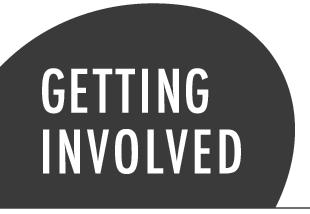
16 wed
Music: Soul Delights
Come to a lively performance. 7:30 to 9 p.m. Farley’s, 1315 18th Street.
17 thur
Benefit: Art Auction
An annual community gathering featuring artwork from local and regional artists, galleries, and collectors. Each year, the Annual Art Auction raises crucial funding for Hospitality House’s community programs. Ticket includes admission to Hospitality House’s Annual Art Auction, hors d’oeuvres from Vive La Tarte, tasty drinks, and the chance to bid on fabulous art. 6 to 9 p.m. $50 advanced ticket purchase; $75 at the door. Minnesota Street Project, 1275 Minnesota Street. For more information and to purchase tickets: https://bit.ly/2qHSCg9
19 sat
Community: Recess’ 10th Anniversary Celebration
Recess, a sacred space for San Franciscan families, celebrates 10 years of play, community, and learning. This family-friendly party will feature playspace access, refreshments, live music, children’s activities, raffle prizes, and more. 9 a.m. to 12 p.m. Suggested donation is $10/person. For tickets and additional information: https:// bit.ly/2HOuyTn
5/21 through 6/17
Theater: Scapegoat
PlayGround’s Festival of New Works 2018 festival continues with the premiere of the full-length play, Scapegoat, by William Bivins. In it, one man tests art’s ability to create change in the face of another police shooting of an unarmed Black man. Directed by Norman Gee. Tickets: $6 to $41 Potrero Stage, 1695 18th Street. For more information and to purchase tickets: https://bit.ly/2H6yfQD
31 thur
Family: Celebration for Moms, Dads, and Grads
The Potrero Hill Neighborhood House celebrates Mother's Day, Father's Day, and all graduates in the community with our Mom's, Dad's, and Grad's event 5:30 p.m. Free. For more information: Sharon Johnson 415.826.8080

On the morning of May 16th, students, teachers, and staff from Potrero Hill schools Daniel Webster, Starr King, and Live Oak will gather once again for an annual “Peace March.” This year’s protest marks the event’s 10th anniversary.
Similar to the recent “March for Our Lives” rally in Washington, D.C. organized by Marjory Stoneman Douglas High School students, Peace March was originally launched by Daniel Webster Elementary School pupils who were frustrated about not feeling safe as they walked to and from campus. Since 2008, the three neighborhood

������
Saturday Vigil 4:15 pm
Sunday 8:30 am
�������
Tuesday 8:30 am
Friday 8:30 am

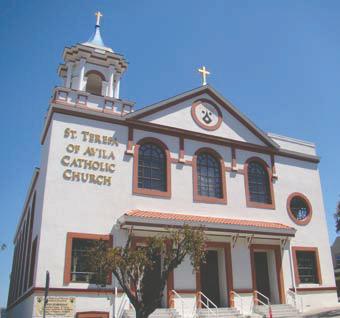
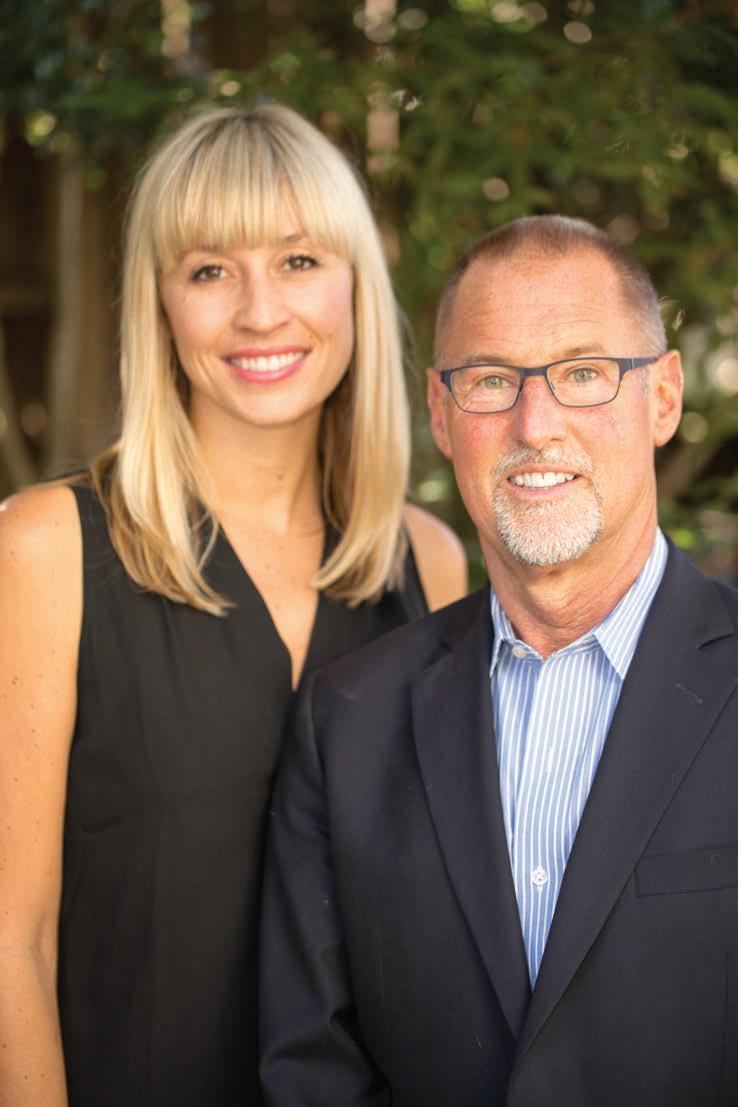
schools have come together – led by Brotha Clint – to march, sing peace protest songs, and carry signs, collecting at the Potrero Hill Recreation Center for a Peace March program. Once there, students contribute spoken word and music performances that focus on peace.
Zack Ravell is the coordinator of
this year’s event, with DJ TC scheduled to be on hand to keeps the program lively, and Brotha Clint serving as MC, leading call and response chants. The San Francisco Police Department will provide police escorts for the march.

Magic Dan
GENEVIEVE FELDMAN BRANCH MANAGER
The 60th Annual Potrero Hill Artists’ Exhibition and Potrero Branch Open House. Bring the whole family and welcome back fantastic Magic Dan! Great magic, positive messages, and a whole lot of fun. Best for ages three and up. Before or after the magic show take a tour of the art! Saturday, May 5, 11 to 12 p.m.
Movie and a Meal
We’ll present a family-friendly film, Potrero Hill Family Support Center will provide a meal. Our May selection is Mulan. Friday, May 18, 3 to 5 p.m.
Traditional Filipino Dances and Performing Arts
As part of Asian-Pacific American Heritage Month 2018 Potrero Library is proud to host the American Center of Philippine Arts. Sunday, May 27, 2 to 3 p.m.
60th Annual Art Show Reception and Open House
San Francisco Public Library’s Potrero Branch proudly presents the 60th Annual Potrero Hill Artists’ Exhibition. The Art Show Opening Reception and Open House will feature old-time music by KC and the MooNshine Band and refreshments. The Potrero Hill Artists Exhibition is San Francisco’s oldest annual art show, and owes its longevity to a group of artists who painted with, or under the tutelage of, the late Charles Farr. Saturday, May 5, 5 to 8 p.m. The Exhibition will be hosted by the Library through Friday, July 27th, 2018.
Mentalism Show with Richard the Mentalist
It’s not the same old magic show. It’s Mentalism! Are you ready for a mindblowing demonstration of clairvoyance with a dash of telepathy and mind control? In this unforgettable program, Richard the Mentalist provides a unique form of entertainment that challenges the notion of free will. You may find that you’re not the only one who knows what you’re thinking. Best for ages eight and up. Saturday, May 19, 3 to 4 p.m.
Saturday Snacktivity
With food provided by the Good Life Grocery, we’ll offer a wholesome snack and fun activity. All ages welcome. Saturdays May 12, May 19, and May 26, 11 a.m. to 12 p.m.
Baby Rhyme and Play Time
Songs and rhymes for infants up to 18 months old and their caregiver(s). Tuesdays, 1:15 p.m. and Thursdays, 11:15 a.m.
Toddler Tales
Books, rhymes, music, movement and more for toddlers 18 to 36 months and their caregivers. Thursdays, 10:15 to 11 a.m.
Puppy Dog Tales
This ongoing Society for the Prevention of Cruelty to Animals program pairs trained dog-and-owner therapy teams with children to grow literacy, selfconfidence, and socio-empathic skills. Your child will adore reading to this calm canine companion in a non-judgmental setting! For ages four to eight; older welcome. Saturdays, May 12 and May 19, 12 to 1 p.m.


Kaiser Foundation Health Plan, Inc. of Northern California received one of the highest possible ratings for its Medicare and private insurance plans from the National Committee for Quality Assurance (NCQA), a non-profit organization that rates health plans for consumer experience, prevention and treatment.
We are proud to be rated 5 out of 5 for 2017 – 2018, the only health plan in the country to receive a “5” for both its Medicare and private insurance plans.*
Yet our greatest honor is always the health and happiness of our members. Learn more at
LONDON BREED from page 4
we can’t,’ rather than how do we get creative and do what’s necessary to address the issue,” she explained.
She’d like to see connections between schools and job opportunities within the City’s various industries. As a youth, she held a paid internship through the Mayor’s Youth Employment and Education Program. “It kept money in my pocket and it kept me out of trouble,” she said. In comparison, her brother failed to finish high school and is in prison. She said she often asks, “How do we avoid that from happening to other people?”
Breed came under fire early in her campaign for being the only major candidate to not distance herself from independent expenditure groups, essentially Super Political Action Committees, that can accept unlimited donations on a candidate’s behalf, though they’re banned from coordinating efforts with the candidate. When asked about ways to keep money from influencing politics, Breed said she feels the City has already made positive strides with public disclosure rules and the $500 limit on individual donations directly to the candidate, a sufficiently low figure that was unlikely to sway any politician’s decisions.
“People are always going to make hay over money and politics,” she said. “I think people have really accepted the fact that money and politics are just something that exist. What we need to do a better job of is when there is wrongdoing we hold people accountable. But sadly, too often in politics people use it as a way to accuse someone of something unethical and that’s not right either.”
Breed pointed out that as supervi-
sor she sponsored legislation to replace Muni’s aging train and bus fleet, and pushed to hire 700 new drivers, in part by changing hiring standards to allow those with past criminal records to be considered. She’s been a proponent of engaging more police officers, and wants them to patrol commercial corridors. “They just help to deter the crime from happening if they are in the particular area,” she said. “We need a more visible presence in our police force on the ground.” She’d like to see more local employment in construction projects. “There is a real connection between job opportunities and infrastructure improvements,” she said.
Breed supports State Senator Scott Wiener’s (D) Senate Bill 1045, which would create a procedure for placing chronic homeless with serious mental health or substance abuse issues under conservatorship. While she doesn’t want to take away people’s rights permanently, she said people’s dignity should be preserved when they’re incapable of caring for themselves. She favors transferring non-criminal mental health conservatorships from the District Attorney’s Office to the City Attorney’s Office, which would move oversight from social workers to the Department of Health.
She’d like to see more accountability for unsavory actions on the street and frequently tells organizations that work with the homeless to pass that message along to their clients. “Even though I lived in the projects, my grandmother cleaned up and made us clean up in front of where we lived,” she recalled. “It is our responsibility as people who are part of this City, whether we are housed or not, to take care of it.”

Dedicated to the success of HOPE SF’s Rebuild Potrero project, BRIDGE Housing strengthens its leadership and completes the team at Potrero with the addition of Alexa Jeffress and Damon Harris
Alexa is the Director of Development at Potrero and oversees all aspects of the large-scale, long-term Potrero revitalization master plan.
Damon, the Vice President of Community Development, is responsible for deepening and expanding BRIDGE’s role in community building and neighborhood improvements, particularly at the large-scale redevelopments like Potrero. He and his team will work with Development to engage residents and partners in advancing a shared vision of community revitalization.
Both Alexa and Damon have prior experience in housing as they come from the U.S. Department of Housing and Urban Development (HUD), where Alexa spent more than seven years as the Director of Asset Management for the Multifamily West Region.
Damon has 10 years as a Community Planning and Development Representative where he coordinated and led intervention, technical assistance and resource-sharing efforts through a U.S. Interagency on Homelessness initiative.
You can meet Alexa and Damon at the monthly Community Building Group meetings held every second Thursday of the month at Starr King Elementary School Cafeteria, 1215 Carolina Street (enter on Wisconsin Street or Coral Road).
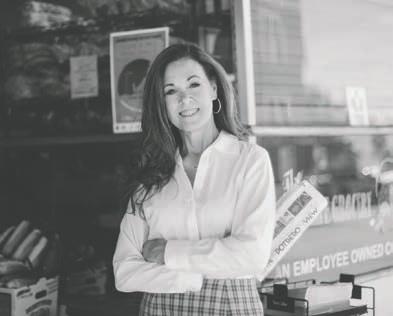
MAR
47
MAR
39
Can you believe?
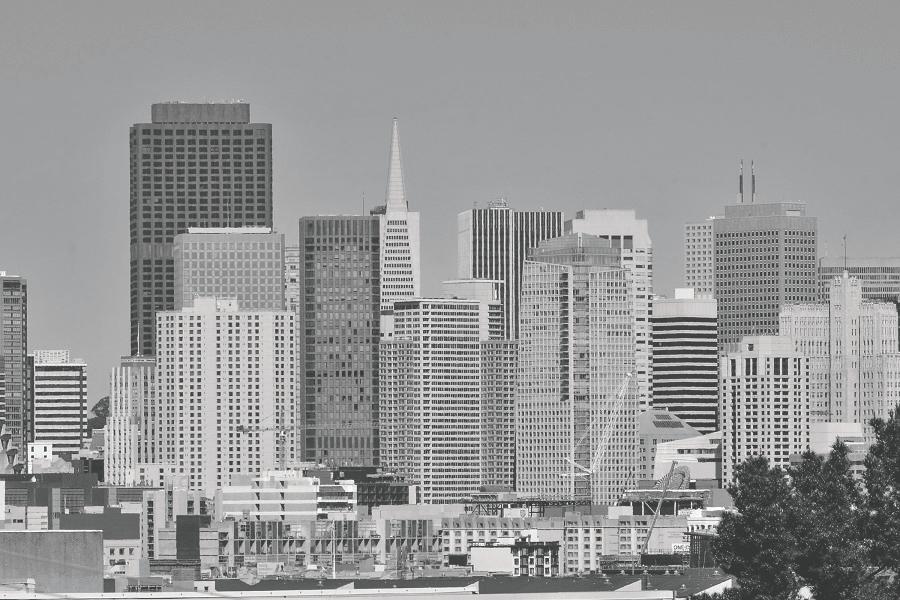













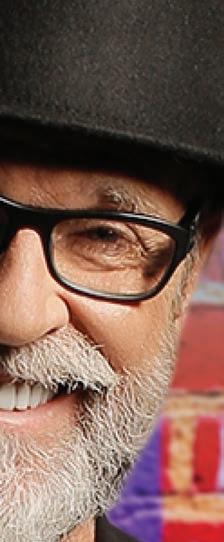


ismatic of the candidates; London Breed may win that title, with Angela Alioto close behind. But he’s by far the most experienced, and has proven himself a reliable, dogged, advocate for vulnerable populations. In a city in which “conservative” means that a politician is somewhat more protective of property rights than a “progressive,” Leno generally paddles middle-left, not so disruptive as to create angry political rifts, disruptive enough to secure beneficial change. Of those running he’s most likely to ensure that San Franciscans get their money’s worth from their multi-billion-dollar municipal budget and advance an agenda that most of us – bar those voting for the White, Republican guy – support.
Leno has been a public servant most of his life, during which he’s demonstrated excellent, compassionate, leadership. The proof is in what he’s already achieved, including brokering the 2016 deal to boost California’s minimum wage to $15 an hour; passing State Legislation that requires police search warrants to access electronic devices or Internet service providers; and ensuring that essential probation services are provided to felons released from prison, to better support their future success. The View is confident he’ll make a great mayor.
The View recommends London Breed as voters’ second choice candidate; Angela Alioto as third.
Addition, has the highest amount, 12. Presently, there’s only one recognized
salon in the Hill: Tiptoes Nail Salon, om De Haro Street.
According to Jackson, salon owners are hesitant to adopt safer practices and become a healthy salon because they’re worried that wearing masks or gloves might look strange to customers. The Department of the Environment wants to spread awareness among consumers, with the hope that’ll induce salon owners to join the program.
“One of the main things salon workers say is that they don’t want to wear the gloves because the customer doesn’t understand why they’re wearing them. It’s really important for their health to wear them, but they’re also afraid of losing business,” Jackson said. “It really helps when customers are aware of the practices that we’re asking the salons to employ, like if the workers are wearing masks and gloves it's not because the customer is polluted somehow; it’s to protect from chemicals.”
roundings deeply impact our moods, and may even shape the way our brains work. Classic college campuses are designed to illicit a sense of intellectual gravity and historical connections with thinkers past. Open space frees the mind to wander, without distractions from billboards and other commercial detritus. A nearby power plant, or freeway, reminds its neighbors that we live in a still industrial-age society, which may not fully care about the polluting consequences of its activities.
The alternative to critiquing what we want our environs to look like is to subject our City to a steady stream of
development that’s shaped by a host of planning requirements – such as number of parking spots – and short-term profits, but little in the way of aesthetic guidance.
One strategy would be to ask San Francisco’s architects, the drafts people of our built environment, to launch a collective conversation about what designs, or design elements, might best suit a future San Francisco, and which should be avoided. Citizen-activists, fighting one-off design challenges in Dogpatch, the Hill, South-of-Market, and elsewhere, could be enlisted in this dialectic.
Ultimately, the goal would be to create more imaginative municipal design advice, specific façade requirements in different neighborhoods, or even an officially-blessed vision of what we want our communities to look like, sufficiently flexible to evolve alongside cultural values.
At best, a city’s architecture expresses its residents’ awake dreams, and inspires joy or at least pleasurable or challenging thoughts. Better that than sleeping through the construction of our future.
height limits as high as 85 feet, contained no language addressing the displacement of existing residents or affordable housing creation, and left unclear whether local controls over demolition would remain. That sparked a diverse opposition that included wealthier residents of low density neighborhoods, tenant’s groups, affordable housing activists and antigentrification forces. Several cities
condemned the bill, including Los Angeles, Palo Alto, Cupertino and Milpitas, as well as the League of California Cities. The San Francisco Board of Supervisors expressed its disapproval by an eight-to-three vote
“It’s a giveaway without asking anything in return,” said supervisor and mayoral candidate, Jane Kim, prior to the vote. “It’s just a bill that enriches the pockets of landowners and developers.”
According to Kim, public policies that increase density generate more profits for land owners; in San Francisco, a typical political strategy is to use such a change as a bargaining chip to secure investments in affordable and middle-income housing, public transportation or parks. Kim’s assertion echoed a San Francisco Planning Commission memorandum which, in evaluating the proposed legislation, stated, “The bill provides huge additional value to property owners throughout the state without concurrent value capture.” The Commission’s memo indicated that the HOME SF program, which provides for increased heights in exchange for 30 percent affordable housing, would have been put at risk.
Opposition led to amendments that scaled down maximum heights, preserved municipal control over affordable housing requirements and demolition of existing buildings, and added protections for displaced renters. Wiener extended affordable housing requirements to projects with more than 10 units even for communities that have no such policy.
Despite the changes, opposition
SB 827 continues on next page
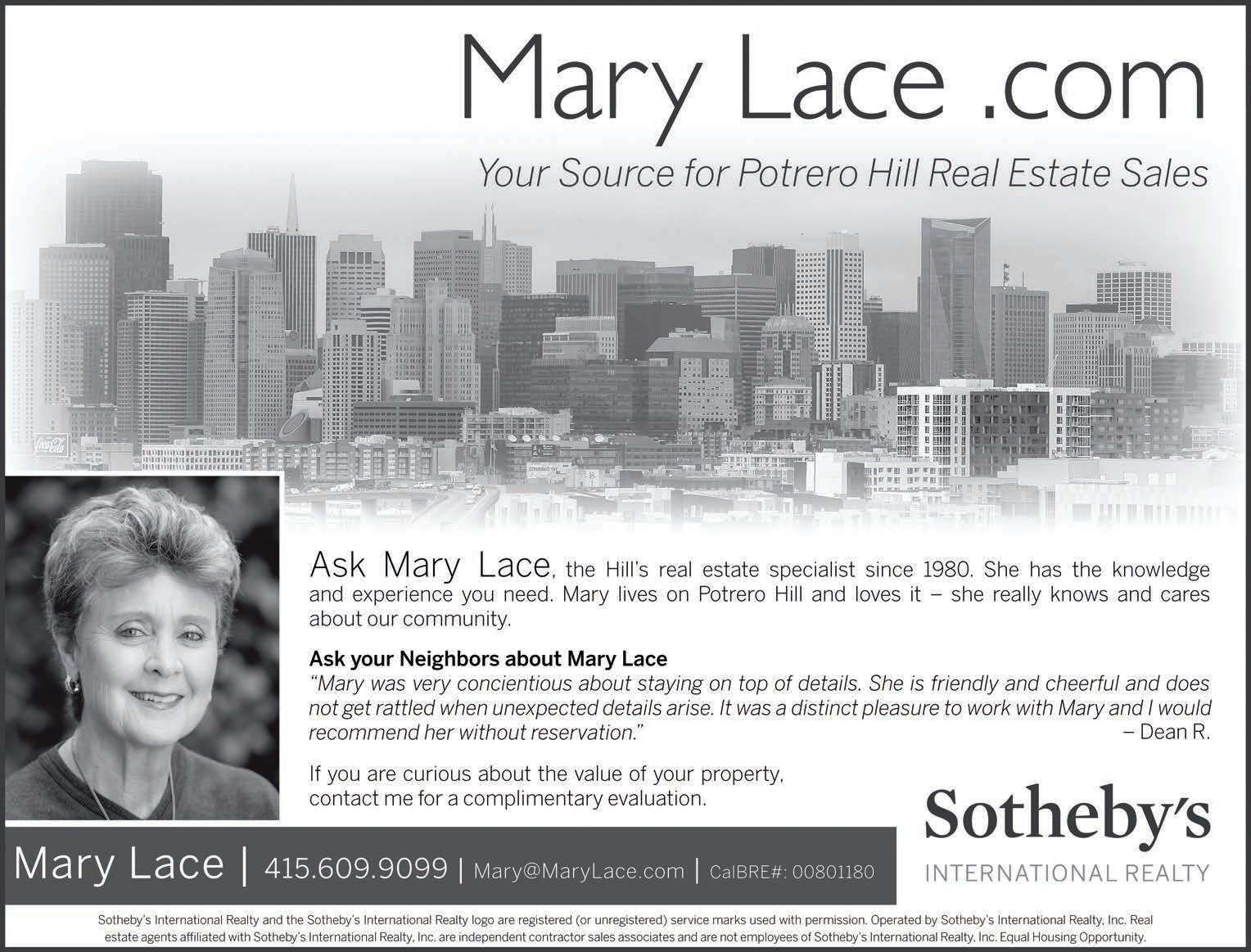
SB 827 from previous page
hardened. While the San Francisco Planning Commission admitted that greater amounts of affordable housing would likely be developed due to a significant increase in construction activities triggered by the legislation, it was otherwise critical of the proposal.
“SB827 appears to eliminate the ability to enforce Planning Code standards or other adopted Design Standards that are the backbone of livability, walkability and urban design quality,” it stated. There’d be no controls over a building’s envelope; it could cover the entire lot. “This would preclude the ability to maintain any standards regarding rear yard, lot coverage, exposure, open space, setbacks, and bulk controls of any kind.”
The revised bill also overrode local planning controls related to density. Supervisor Malia Cohen expressed concerns that, to maximize revenue, developers could construct buildings consisting largely of one-bedroom condominiums “accessible only to the ultra-rich.” Cohen, nonetheless, supported the concept of the bill, citing theories circulated in academia that low density development in wealthier communities leads to segregation.
“Restricting zoning and related land use policies have, since their very inception, played a critical role in establishing and maintaining patterns of residential segregation,” stated a letter signed by 17 university professors from around the country in support of SB827. As examples it cited, “singlefamily housing, front yard and building setbacks, restrictive floor to area ratios, parking requirements, and height and density requirements.”
Another letter, signed by 23 California professors, 13 from the University of California, Los Angeles, pointed out that, “There is no path out of the crises that does not involve new supply” and that “cities that block housing out of fears of congestion or aesthetics are prioritizing amenities of a lucky few over basic shelter for the many.”
Nonetheless, in San Francisco and Los Angeles, low income community groups overwhelmingly lined up against SB827. A protest in front of San Francisco’s City Hall pitted African-Americans, Hispanics and Asian-Americans against a mostly white crowd supporting the bill.
According to Jeff Cohen, co-director of the Council of Community Housing Organizations (CCHO), equity groups don’t agree with the trickledown economic theory that housing prices will decline just by saturating
market rate supply. “If you want affordable housing, you need to build affordable housing. If you want low income housing, you build low income housing. If you want market rate housing, you build market rate housing,” he said.
CCHO, a coalition of 25 community housing developers and tenant advocates, claims its members have been involved in every affordable housing project in the City over the past 40 years except those being driven by large companies, such as Bridge Housing, which is redeveloping the Potrero Annex-Terrace housing complex.”
The basic ingredient is land and money,” he added. “Everything has to go somewhere. There are only so many sites that can be developed, and every site that has market rate is one less spot for affordable housing.”
While bill supporters claimed it’d encourage development in higher income, low density, areas, rather than sparking a building boom in poor neighborhoods, Jeff Cohen said he’d have liked to have seen an amendment protecting those communities. He also pointed out nothing required developers to actually construct, explaining that an owner, who has already seen land value increase as a result of the bill, could continue sitting on the property if they believed maximum value could be achieved at a later date.
Bill advocates pointed to SB827’s environmental benefits. To discourage automobile traffic, the legislation would’ve required developers to buy transit passes for all building occupants and limited local requirements for providing parking for new residential units.
Building near transit to avoid sprawl-style development was a key element of the bill’s strategy. “The carbon footprint per capita of urban residents is much lower than people who live in suburban areas requiring cars,” explained Ethan Elkind, a University of California, Berkeley law professor who directs the school’s climate program. Last year, Elkind, one of the professors who signed in support of SB827, co-authored a report, Right Type, Right Place, that detailed ways housing can be built to help California meet its ambitious 2030 climate goals. It concluded that if new residential development goals were met by focusing housing in areas with easy access to public transportation, greenhouse gas emissions would be lower by 1.79 million metric tons annually.
However, while environmental advocates, such as the Natural Resources Defense Council, Climate Resolve and
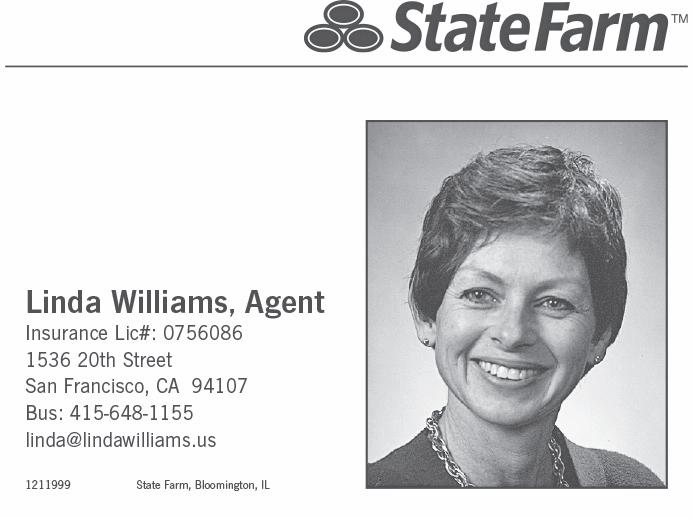
Environment California endorsed the bill, the Sierra Club opposed it on the grounds it could spark community resistance to transit expansion. The Planning Commission voiced a similar concern; that by tying zoning to bus service, neighborhoods opposed to density might fight to suspend or avoid service growth. The Sierra Club, in its letter denouncing the bill, stated, “The increase in the cost of land from new luxury units can increase rents that further displacement.” Lower income residents, those most likely to use public transit, could be pushed further away from job centers. In Los Angeles, transit use has sharply declined over the past five years, particularly in neighborhoods that’ve seen gentrification.
With 323 pages of letters and emails sent to the San Francisco Board of Supervisors in opposition, the bill had become an issue in the mayoral election. A bulk of the correspondence came from Marina and West of Twin Peaks addresses, neighborhoods which’re moderate politically, where low density homes are common. Others voicing hostility included the Potrero Boosters, Save the Hill and Grow Potrero Responsibly. While Kim was strongly against, fellow supervisor and mayoral opponent, London Breed, indicated she’d have supported the bill if it ultimately was limited to parcels where no one currently lives. “What is clear is we have a deep housing shortage all across the state. And we need to do everything we can to address it. The status quo everyone claims they don’t want to see continue happens time and time again,” she said.
The McKinsey study touted by proponents calls for reducing the building approval process time and reforming state incentives to push local governments to approve housing. However, the study, A Toolkit to Close California’s Housing Gap: 3.5 Million Homes by 2025, doesn’t endorse a one-size-fits-all solution. It notes that efforts “must be developed and employed at the local level” due to unique market demands and area preferences and “the local strategy should be tied to a vision for a better city that connects housing to citizens’ broader goals.” It identified
373 vacant parcels in San Francisco capable of supporting 4,500 units and noted that 31 percent of multi-family parcels have been built under capacity, capable of sustaining another 70,500 units without a zoning change.
homeless population. Speaking from her experience as a civil rights attorney, she said that conservatorships should only be used in severe cases, as the legal procedure can curtail people’s freedom long term.
When asked about the lack of public amenities in the Southside neighborhoods in the face of a steady stream of residential development, Alioto said that rapid job creation beginning in 2012 wasn’t accompanied with adequate planning for how the thousands of new employees and residents would commute or find housing, resulting in traffic congestion and an undersupply of affordable housing. She proposes putting together a coalition of tech industry representatives, government officials and neighborhood groups to discuss solutions to these issues and promised attendance at meetings held by community groups.
“I would be the neighborhood mayor,” she said.
Alioto wants to bolster public transportation as a way to reduce dependence on cars, and said she’d expand transit in underserved areas, make it more affordable and fast track new infrastructure projects in major corridors.
Although Alioto thinks that development should be co-located with transit stations and routes, she believed failed Senate Bill 827 would've devastated neighborhoods, in part because of its lack of restrictions on residential height limits. Alioto sees weakening local zoning as a threat to maintaining the City’s character. Instead, she wants to prioritize building density over increased height limits, as a means to construct 5,000 housing units annually, with an emphasis on homes priced for
ANGELA ALIOTO continues on page 18
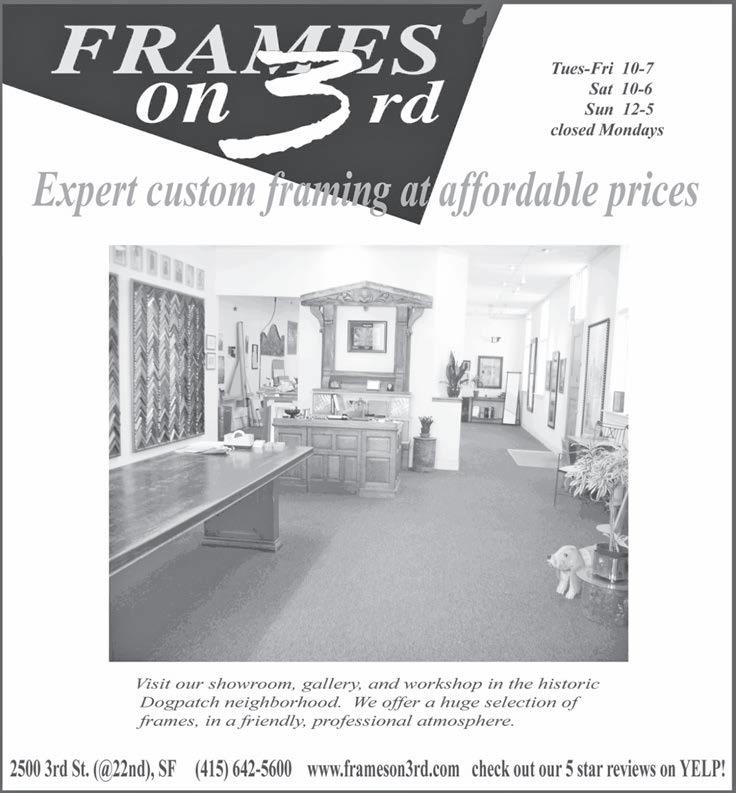
CITIZEN from page 5
partment reached out to the neighborhood to discuss the project even before the preliminary application was filed.”
Once an application is submitted, the City solicits additional community input. A public hearing is required for projects that involve demolition of an existing structure, and, in most cases, such a scheme goes before the Planning Commission, which has the power to authorize, modify, or deny it. Neighbors within 300 feet, as well as registered neighborhood organizations, are notified of the proposal by mail, and the Planning Department collects public comments over a 30-day window. This is also the case if an applicant seeks a Conditional Use, which involves a usage not principally permitted in the

particular zoning district.
For new construction, the notification requirement extends only 150 feet. However, within the 30-day notice period, anyone can request a “Discretionary Review” (DR), which requires that the Commission, rather than Planning staff, determine the project’s fate.
According to the Planning Department’s website, the DR process is intended to ensure that proposals comply with the Planning Code and design standards. However, the website notes that review can result in inconsistent outcomes, adds cost, and takes time away from the Commission to address larger planning issues. An attempt to reform the DR process seven years ago resulted in an expansion of pre-application meeting requirements.
Rich Hillis, Commission president, told the View that the Commission tends to err on the side of allowing greater public input, including delaying a hearing if neighbors aren’t aware of a project’s details.
If the Commission approves a project that’s been subject to a DR, the decision can be taken to the Board of Appeals for another review. In 2016, the Boosters did just that regarding the Commission’s interpretation of what constituted a two-bedroom apartment at a 127-unit development located at 88 Arkansas Street. The Boosters were unhappy that some of the bedrooms lacked an exterior window, a required amenity under the Eastern Neighborhoods Plan . The Boosters lost the appeal, but got the definition tightened later through municipal legislation.
For all but the smallest projects, a sponsor is required to complete an Environmental Evaluation (EE). The Planning Department, following California Environmental Quality Act guidelines (CEQA), evaluates the EE to determine whether environmental impacts might be sufficiently large to require a more in depth, and expensive, Environmental Impact Report (EIR). If the Planning Department decides that impacts aren’t significant or can be mitigated easily, that decision can be appealed to, first, the Planning Commission, and then the Board of Supervisors.
The time and cost of an EIR varies widely. Developing the document generally necessitates the developer hiring consultants and reimbursing the Planning Department for assistance in putting the analysis together. Public comment is solicited after a draft EIR

is published, which is included in the final EIR, a document that’s presented to the Commission at a public hearing.
If the Commission approves a project, anyone who submitted comment can appeal the decision to the Board of Supervisors. The Boosters did that over the Pier 70 development, as a means to push for more housing and less commercial space; an agreement with the developer was reached prior to a hearing on the matter.
EIRs are rare. According to the Rose Foundation, a nonprofit that advocates for environmental initiatives, only 14 out of 127 projects that were subject to CEQA review in San Francisco from 2013 to 2015 required a full EIR. More than half the projects were exempted because they were consistent with previously approved plans at the site.
The City doesn’t offer appeals past the Board of Supervisors; if opponents of a development want to continue to fight the final avenue is the courts. A suit brought on CEQA grounds last year by Save the Hill and Grow Potrero Responsibly over the Corovan project is working its way through the judicial system now. The project involves 395 housing units and 25,000 feet of commercial space in two buildings located at 901 16th Street and 1200 17th Street. The two advocacy groups want changes they say would be more in line with the neighborhood’s character and history.

Most proposed developments proceed more or less smoothly, within the context of a City in which citizen engagement is encouraged. When initial plans at Avalon at Mission Bay, a housCITIZEN continues on next page









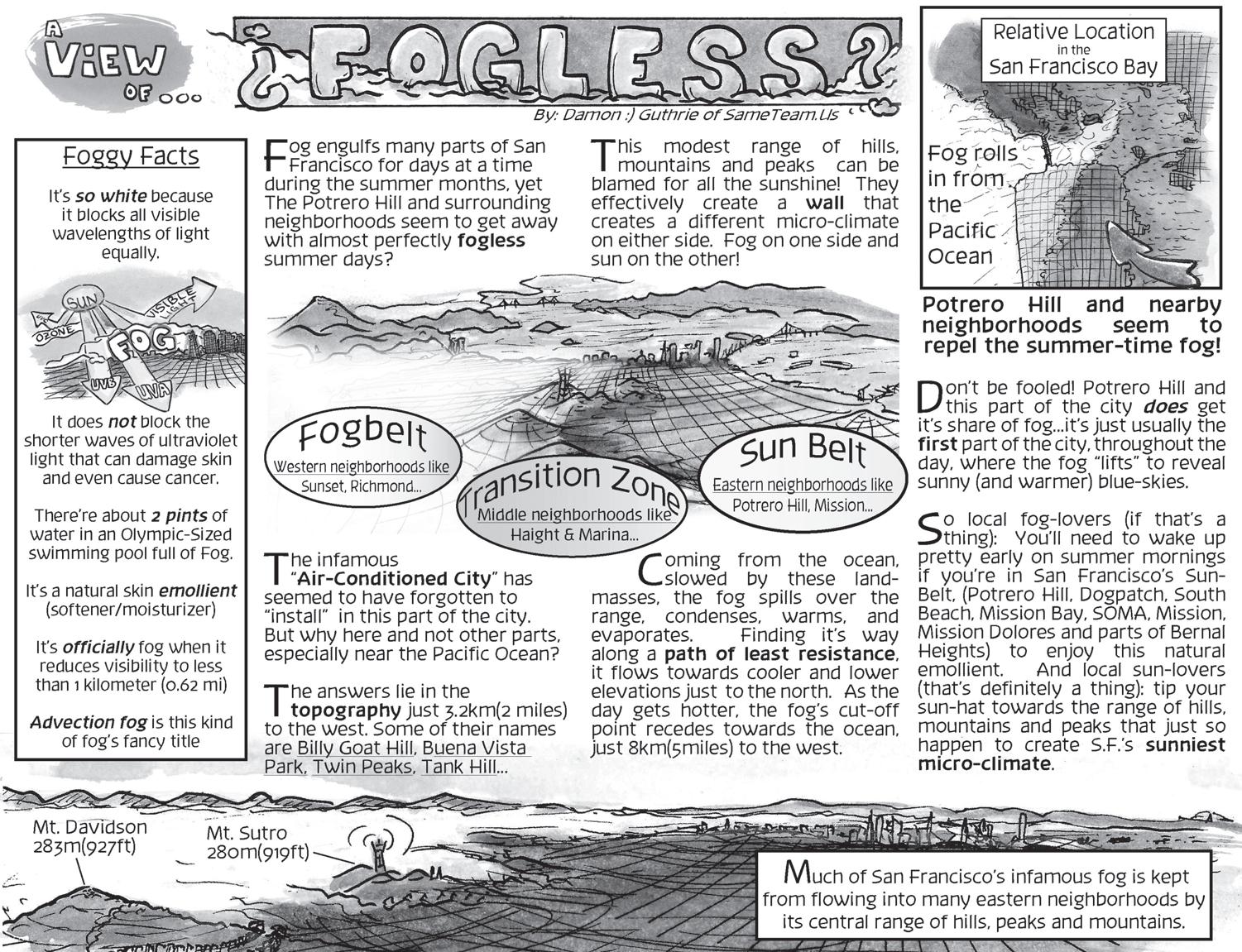
ing development at 255 King Street, showed a building that Huie said was “up against the freeway,” DNA successfully lobbied to lower its height, provide wider sidewalks and a public walkway.
At O&M, at 680 Indiana Street, DNA succeeded in securing greater amounts of below market rate housing than initially planned. At Abaca, at 2660 Third Street, below market housing was also added after community input. In response to requests from the neighboring Hells Angels, Abaca’s developers also changed aesthetics to increase privacy.
According to Eppler, most of the time the community can work directly with the developer to resolve issues; the Planning Department only needs to get involved when there are specific technical issues. “We believe that local control of planning can add value to the process and I think we have demonstrated that neighborhood involvement and growth are not opposing forces,” he said.
HOMELESS from page 7
Centers and associated mental health services.
Breed suggests that the City experiment with modular homes, improve mental health and addiction services, offer safe injection sites, make it easier to conserve the most difficult to serve individuals, and increase Navigation Center capacity. “With commitment and the right institutions, we can create a San Francisco where no one is forced, relegated or allowed to sleep on the
streets,” she said.
According to Breed, her efforts to increase public awareness of safe injection sites were effective, evidence of the importance of fostering citizen acceptance of challenging concepts. She’s worked with labor unions to discuss development of non-standard housing, such as modular units. “When I am mayor I will not let up until there is a visible difference,” she said.
Kim wants to simplify the process for homeless residents to access shelters, increase the number of Navigation Center and shelter beds, extend lengths of stay, and build additional 24/7 “medical respite” accommodations.
All four candidates agree that it’ll take a comprehensive approach to meet the homeless challenge, including adding non-permanent shelter capacity, and that a one-size-fits-all program won’t work.
BUDGET from page 7
sor staff member, the meetings were attended by 30, 40 and 100 residents respectively.
“Participatory Budgeting … provides a public forum for constituents to weigh in on their spending priorities,” Cohen stated in an email to media outlet, Hoodline.” It is a form of direct democracy that positively impacts our community.”
Potential projects had to meet certain guidelines. In addition to benefiting District 10 residents, schemes needed to cost between $5,000 and $25,000, and be a one-time, non-recurring, non-operating expense. District 10 residents had until Christmas to
submit proposals, after which Cohen’s staff worked with the Controller’s Office to determine each proposal’s feasibility, and to merge redundant ones. Other City departments, such as Recreation and Parks, supported the effort.
This year’s ballot was first available online, followed by a paper version distributed at District 10 public libraries, as well as at Cohen’s City Hall office and the Samoan Community Development Center. District residents 16 years and older were permitted to cast votes.
“Voting was publicized through the newsletter and through Supervisor Cohen’s facebook page,” offered Sophia Kittler, legislative aide. “We intend to tweet and post on facebook several times before the announcement of winners by the end of May at the latest and will be announced by newsletter and social media. From there, we have an RFP process after the Budget is passed to identify vendors and distribute funds where appropriate.”
The supervisor’s office did not proactively notify the View of the voting at anytime during the process.
Voters could select up to eight projects from 30 options. Ballot items included a mini-park equipped with security cameras, safety lighting and a pathway connecting Arkansas, Connecticut and Missouri streets; a Bayview emergency power generation program for use during a disaster, such as an earthquake; and free computer and coding classes.
“The nice thing about Participatory Budgeting is that you don’t have to just vote for one item,” said Katherine Doumani, Dogpatch resident. “I think
it’s a really great idea and hope it continues. There are an amazing number of community support and greening proposals. It’s wonderful to see the list and I’m happy to see the great work being done in the community.”
Doumani helped craft a project to provide $10,000 for neighborhood outreach to support creation of a Dogpatch community center. The “Dogpatch Hub” would feature multi-purpose spaces aimed at engendering community cohesion and providing neighborhood services. Doumani is part of Friends of Dogpatch Hub, a nonprofit organization working to establish the Hub, including identifying surplus municipal properties that could be repurposed. One such site is the long-derelict Potrero Police Station and hospital, located at the corner of Third and 20th streets. Friends secured City funding for Neighborhood Asset Activation of the property, a program that targets “vacant or underutilized buildings of cultural or historical significance and implement creative short- and longterm activation to enable identified buildings to become assets to their surrounding communities.”
“The building has defied everyone’s attempts to solve the ongoing deterioration,” said Doumani. “Right now we’re working with the City and Police Department to find out the ideal outcome for everyone.”
According to Doumani, locating the Hub at the building would provide an effective facility from which to tell the story of Dogpatch and give new residents a link to the neighborhood’s history. She added that the 6,000 square
CLEANING PROFESSIONAL since 1986. Offices, apartments, homes, and buildings. Roger Miller 415-7944411 References given with bid.
Gorgeous, rustic, Muir Beach space and stunning Mission Dolores home available for day rentals. Perfect for six to 10 people engaged in retreats of all kinds: writing, yoga, team-building, strategy sessions. $1,500 to $3,000 a day. Editor@ potreroview.net; 415.643.9578.
Walking distance to the beach, with the crashing waves visible and audible from the place. Includes kitchenette and lovely patio. $175/ weekdays; $200/weekends; $250/ holidays. Editor@potreroview.net; 415.643.9578.
Walking distance to the beach, with the crashing waves visible and audible from the place. Three bedrooms, two baths, with a lovely deck. Minimum two nights: $450/ weekdays; $500/weekends; $550/ holidays. Editor@potreroview.net; 415.643.9578.
CELEBRATE YOUR CHILD’S MILESTONES: The View is pleased to publish photographs and captions feting birthdays, graduations, sports achievements and the like. Send yours to editor@potreroview.net
FREELANCE WRITERS: The View is looking for writers, with fee-based compensation provided. Contact: editor@ potreroview.net
YOUR CONTRIBUTIONS WELCOME: Donations of any size are appreciated to support your neighborhood newspaper. Send checks to: The Potrero View, 1459 18th Street, Number 214, San Francisco, California 94107
Got something you need to sell? Have a service you provide? Our Classified Ad section is just the place for you! Cost: Each classified ad is $25 for up to 200 characters, including spaces. A 20-percent discount will be provided for ads paid for six months in advance. Payment, and/or corrections, must be received by the 18th of each month for the ad to appear in the following month’s issue. Please email all classified ads to office@potreroview.net
low and middle-income earners.
In a City renowned for having a small population of children, for Alioto improving community safety is closely tied to making San Francisco a better place for youth and their families. Her focus on security, and outspokenness about the need for greater respect to be paid towards law enforcement, almost certainly played a role in her garnering the San Francisco Police Officers Association’s endorsement.
“The Mayor of San Francisco must have passion and commitment,” wrote Martin Halloran, SFPOA president. “She must understand this great City, its incredible legacy of diversity, and have a strong commitment to San Francisco values. She must understand that compassion must be balanced with common sense when tackling public safety issues and keeping San Franciscans safe and free of crime. Most importantly, she must understand our Police Department and its members and care about public safety. The only candidate who meets these criteria and has the passion, historical perspective, common sense, and unquestioned love for our City is Angela Alioto.”
To combat recent increases in property crime, Alioto proposes installing more security cameras, and adding officers to monitor streets and parks on foot, bicycle and horseback. She called San Francisco’s pulling out
San Francisco Youth Commission
Application for 2018-2019 Term
of the Federal Bureau of Investigation’s Anti-Terrorism Task Force, “unacceptable,” citing concern over greater vulnerability to terrorist attacks. The Police Department withdrew from the Task Force last year following outcry over the Trump Administration’s travel ban.
“I’m the only parent in this race; I have children and grandchildren,” Alioto commented. “We have to make rent more affordable, improve the school system and clean up the streets and parks. The parks are dangerous and it’s scary for children. Developers need to pay attention to affordable housing for families.”
BUDGET from page 17
foot building would be insufficient to meet the demands of a growing residential population, and that a larger recreation center is also needed for the formally industrial community.
Last year, more than 1,100 District 10 residents voted during the Participatory Budgeting process. Eleven winning projects spent $250,000, including a public recreation and open space initiative at the Enola Maxwell public school campus, five movie nights in District parks, a youth gardening program, and crosswalks at Cesar Chavez and Third streets.
Do you have an opinion about how your City makes decisions that affect you and your friends?
Do you want to be involved with youth representation at City Hall?
Join the San Francisco Youth Commission!
Due Friday, April 20 th by 6pm (if submitting in person)
Or Sunday, April 22 nd (if submitting by email, fax, google form)
You can access the application on the Youth Commission website: https://tinyurl.com/YCapp2018pdf
You can also complete the application via google form: https://tinyurl.com/YCapp2018
Please refer questions to: Phone: 415.554.6446 | Email: youthcom@sfgov.org
Poll Workers Needed
The Department of Elections seeks volunteer poll workers for the June 5 election.
On Election Day, poll workers assist voters at each of San Francisco’s 583 polling places. Poll workers must be California residents, U.S. citizens or legal permanent residents, and at least 18 years old. To assist San Francisco’s diverse electorate, people fluent in Chinese, Spanish, Filipino, Vietnamese, or Korean in addition to English are encouraged to apply.
For their day of service, all poll workers receive training, a stipend up to $195, and a commemorative pin. Apply in person at City Hall, Room 48, Monday–Friday, 10 am–4 pm. Visit sfelections.org/pollworker or call (415) 554-4395.
San Francisco high school students over 16 can join the High School Poll Worker program. Students call (415) 554-4395 for a special application and do not need to apply in person.
WIC is a federally funded nutrition program for Women, Infants, and Children. You may qualify if you are pregnant, breastfeeding, or just had a baby; or have a child under age 5; and have a low to medium income; and live in California. Newly pregnant women, migrant workers, and working families are encouraged to apply.
WIC provides Nutrition Education and Health information, breastfeeding support, checks for healthy foods (like fruits and vegetables), and referrals to medical providers and community services. You may qualify for WIC if you receive Medi-Cal, CalFresh (Food Stamps), or CalWORKS (TANF) benefits. A family of four can earn up to $3,793 before tax per month and qualify.
Enroll early! Call today to see if you qualify and to make an appointment. Call City and County of San Francisco WIC Program at 415-575-5788. This institution is an equal opportunity provider
The City and County of San Francisco encourage public outreach. Articles are translated into several languages to provide better public access. The newspaper makes every effort to translate the articles of general interest correctly. No liability is assumed by the City and County of San Francisco or the newspapers for errors and omissions.
In 2016, Californians overwhelmingly recognized that the government’s longstanding War on Pot was a failure when they voted to legalize recreational marijuana. It passed by a higher margin in San Francisco than anywhere else in the state. That’s because history tells us, and San Franciscans understand, that bans on adult products do not work and inevitably lead to selective enforcement. But, for some reason, the Board of Supervisors chose this moment to ignore history and force a new prohibition of their own onto San Franciscans.
Our city has serious problems including homelessness, a severe lack of affordable housing, gentrification, vacant storefronts, and horrible traffic congestion. But rather than address these quality-of-life issues, the Supervisors spend their time banning adult choices. If the Board of Supervisors would spend less time grandstanding and more time governing, San Francisco could once again become a city that is welcoming to all—regardless of income, race, or origin.
In addition to the increased age restriction, California voters recently passed a 200% increase in the tax on tobacco. These taxes—which generate over $1 billion per year—are supposed to be going to education, healthcare, and enforcement. Government leaders should give these new laws a chance to work and actually enforce the existing laws that are intended to keep tobacco products out of the hands of minors. Education and enforcement are the real solutions and California laws already provide tens-of-millions of dollars for both.


